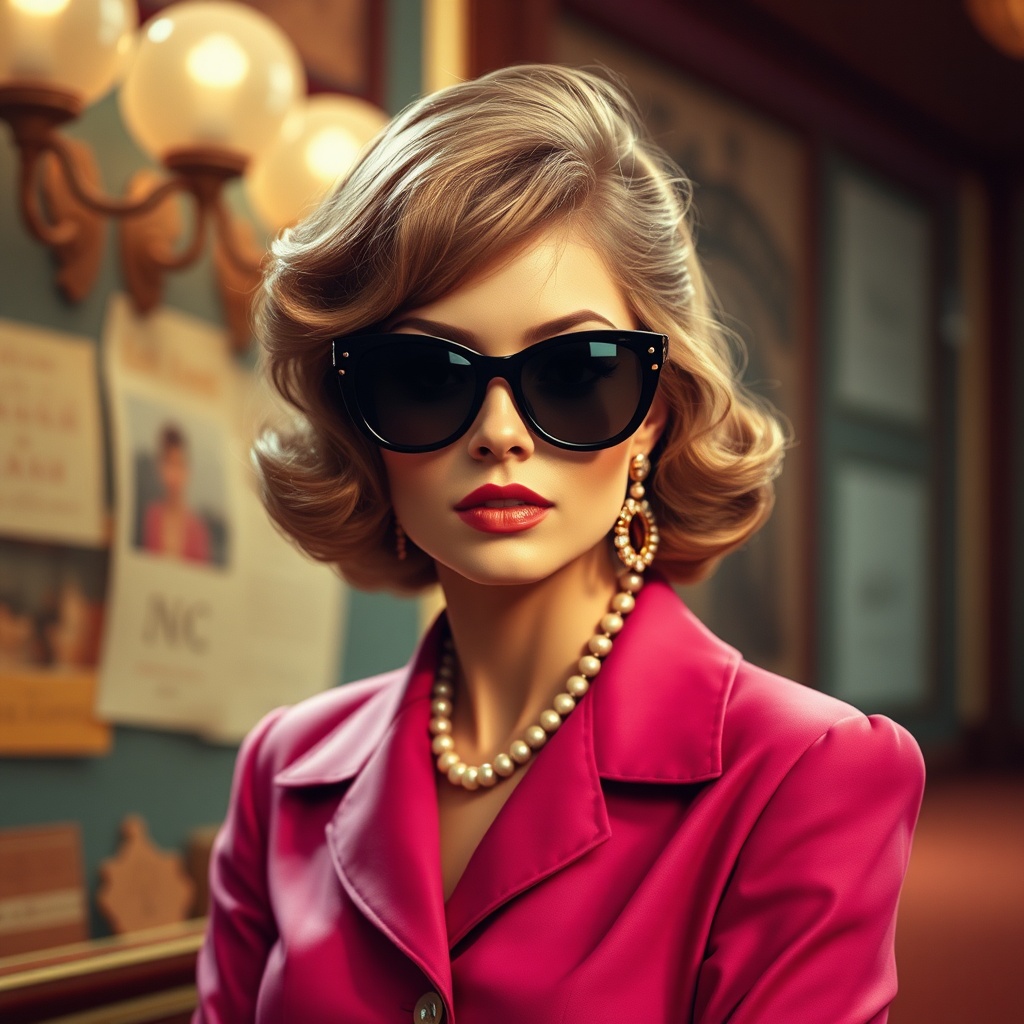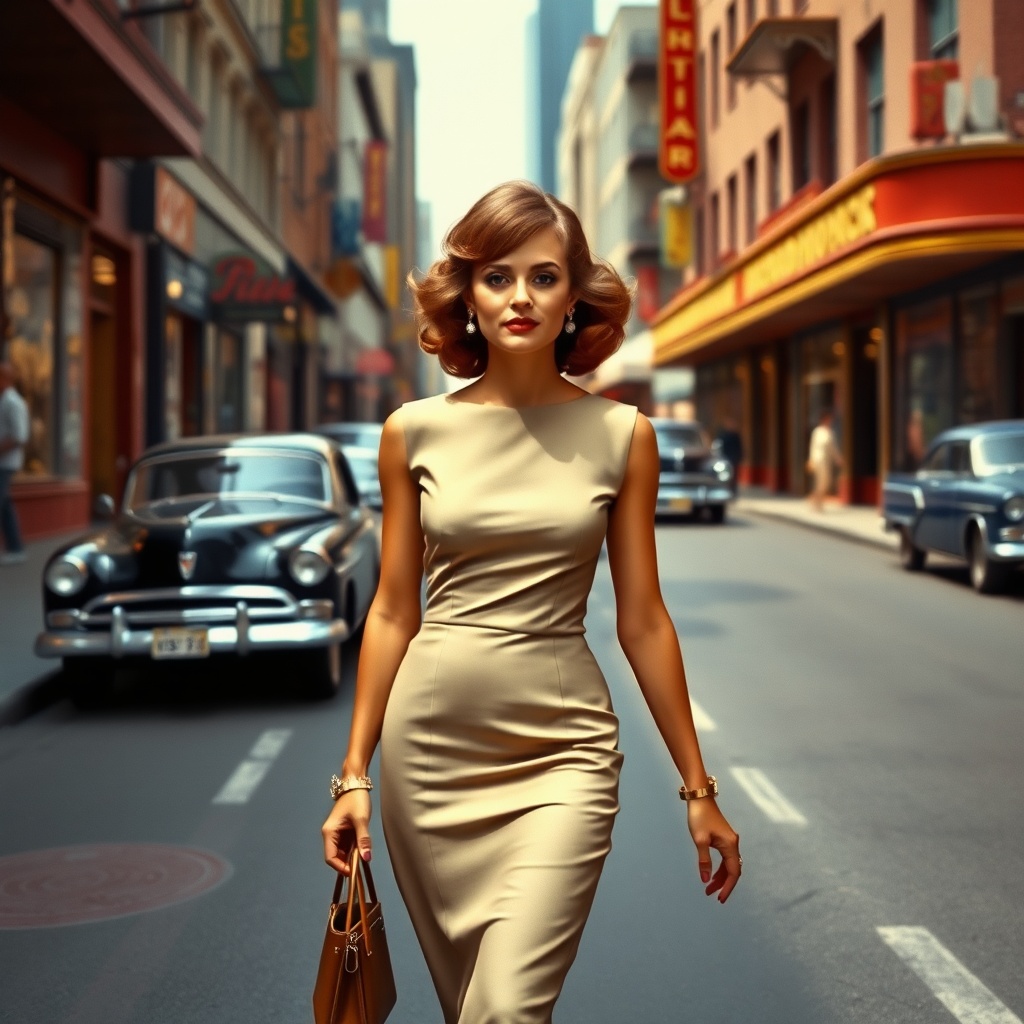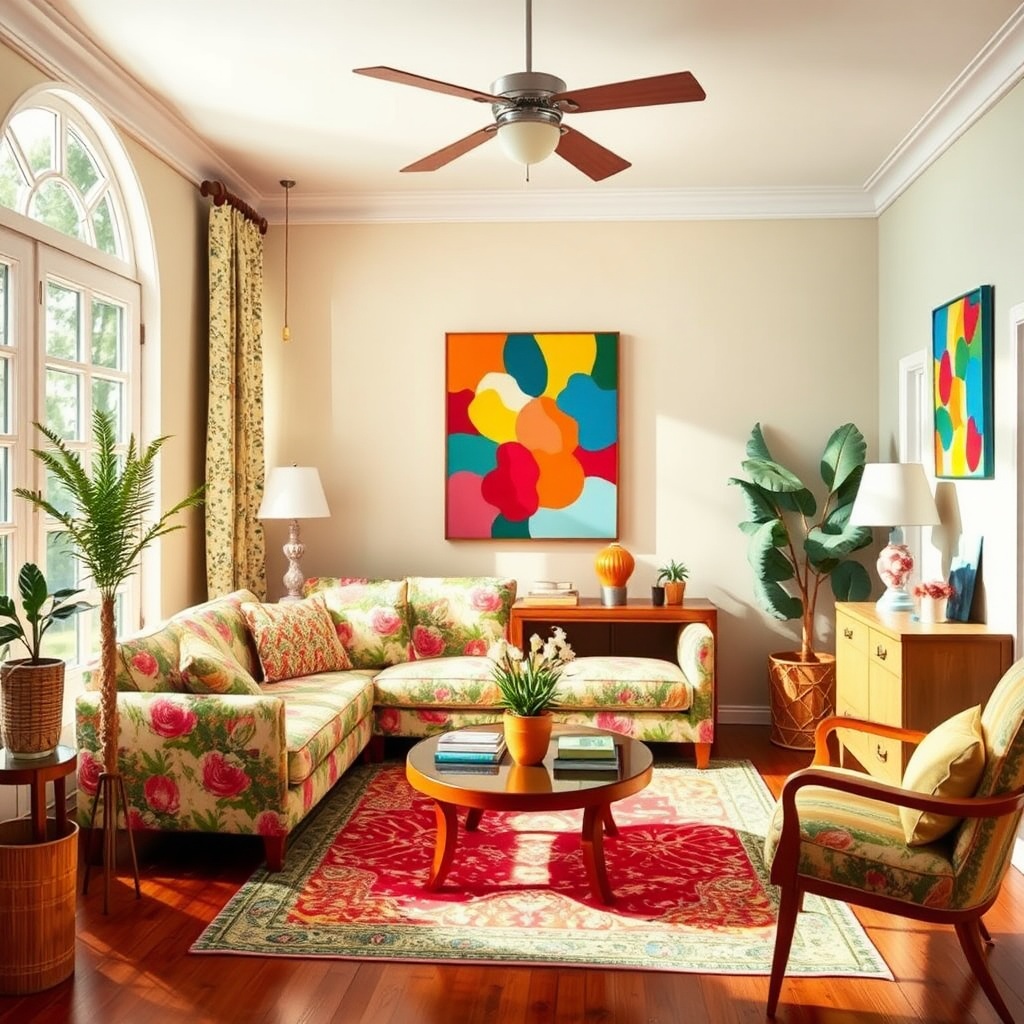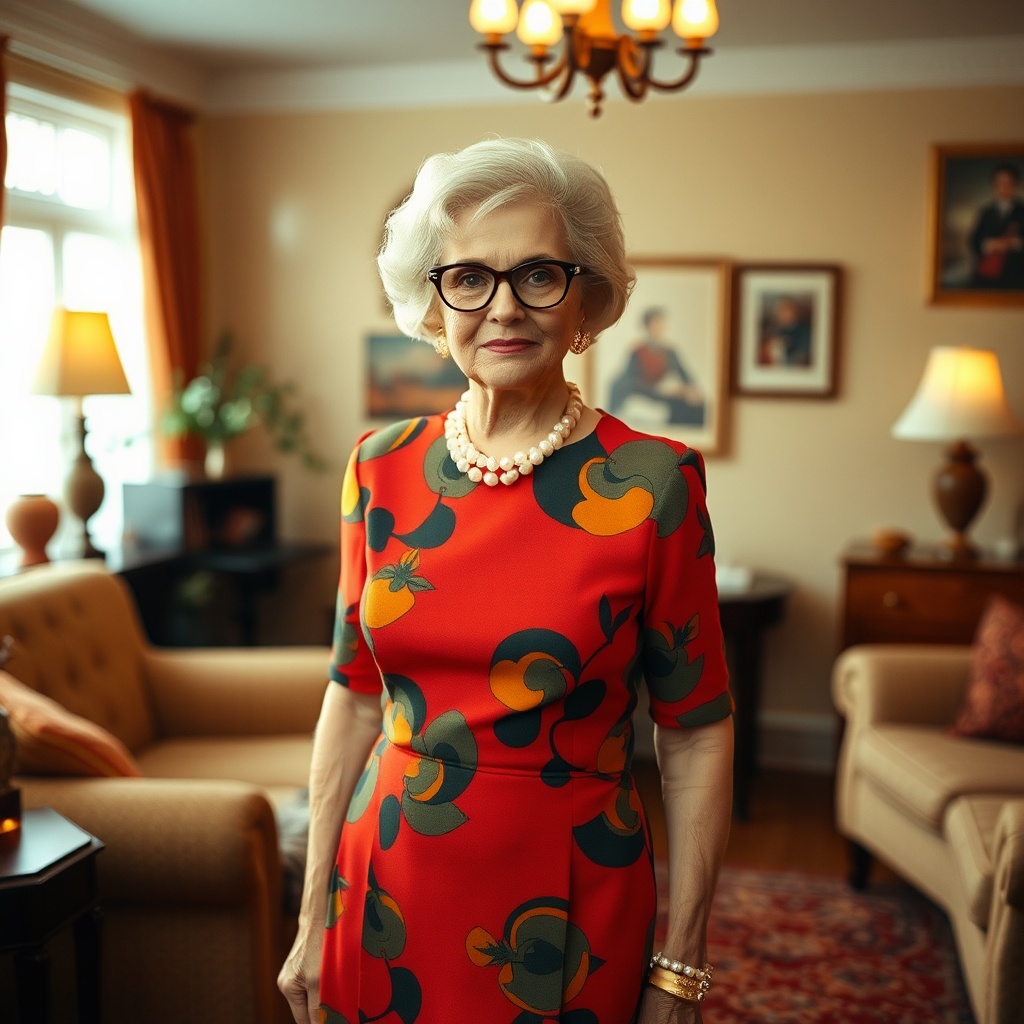Rediscovering the Glamour: A Journey Through 1960s Fashion Icons

Introduction to the 1960s Fashion Revolution
The 1960s was a decade of change, not just in music and culture but also in women’s fashion. This era saw the rise of iconic styles that celebrated femininity and empowerment. Let us embark on a journey to rediscover the glamour of the 1960s through its fashion icons.
Fashion Icons of the 1960s
- Audrey Hepburn: Known for her chic and elegant style, Hepburn’s fashion choices in films like Breakfast at Tiffany’s set a standard for timeless elegance.
- Twiggy: The face of the mod movement, Twiggy’s androgynous look and bold makeup redefined beauty standards.
- Jackie Kennedy: As First Lady, Jackie Kennedy’s sophisticated outfits, particularly her pillbox hats and tailored suits, became symbols of grace and style.
- Brigitte Bardot: With her flirtatious style, Bardot embodied the spirit of the ’60s with her playful dresses and signature hairstyle.
Key Fashion Trends of the 1960s
Let’s explore some of the most significant trends that defined the 1960s:
- Mod Fashion: Characterized by bold patterns, mini skirts, and vibrant colors. This trend was all about youth and rebellion.
- Bohemian Style: A reflection of the counterculture movement, featuring flowing fabrics, ethnic prints, and a relaxed vibe.
- Space Age Fashion: Inspired by futuristic themes, designers like Pierre Cardin introduced geometric shapes and metallic fabrics.
The Influence of Accessories
Accessories played a crucial role in completing the 1960s look. Here are some must-have items:
- Headbands: A popular accessory that added a playful touch to any outfit.
- Statement Jewelry: Chunky necklaces and oversized earrings became essential for a bold look.
- Pillbox Hats: Made famous by Jackie Kennedy, these hats were a staple for any fashionable woman.
Fashion’s Impact on Women
The fashion of the 1960s was not just about looking good; it was a form of expression. As women began to embrace their independence, their clothing choices reflected their newfound freedom. The decade encouraged women to be daring, to explore their identities, and to express themselves through their personal style.
Conclusion: Embracing the Legacy of 1960s Fashion
As we reflect on the empowering styles of the 1960s, let us celebrate the icons that shaped this vibrant era. Their contributions to fashion continue to inspire generations. Whether you choose to incorporate elements of this glamorous decade into your wardrobe or simply admire its aesthetic, the spirit of 1960s fashion remains alive and well.
The Revolution of Style: How 1960s Women Redefined Elegance

The Revolution of Style
The 1960s was a decade of profound change, not only in politics and society but also in the realm of fashion. Women were no longer confined to the traditional roles that dictated their appearance. Instead, they embraced a newfound freedom, expressing their individuality and redefining what elegance meant. Let’s take a closer look at how these empowered women shaped fashion during this revolutionary time.
Breaking Free from Tradition
In the early years of the 1960s, women’s fashion began to shift dramatically. Gone were the days of restrictive clothing and conservative silhouettes. Instead, a wave of bold styles emerged, characterized by:
- Mini Skirts: Perhaps one of the most iconic symbols of the decade, the mini skirt challenged traditional notions of modesty.
- Bright Colors and Patterns: Women began to embrace vibrant hues and playful prints, reflecting the optimism of the era.
- Mod Style: This trend was all about youthful exuberance, featuring geometric designs and sharp lines.
The Icons of the Era
The 1960s saw the rise of influential fashion icons who played a pivotal role in shaping women’s style:
- Audrey Hepburn: Known for her classic elegance in films like “Breakfast at Tiffany’s,” Hepburn embodied sophistication with her chic outfits.
- Twiggy: The first supermodel, Twiggy represented a new, androgynous aesthetic that broke away from conventional femininity.
- Jackie Kennedy: As First Lady, Jackie’s tailored suits and pillbox hats set a standard for timeless elegance.
Fashion and Feminism
The 1960s was also a time when the feminist movement gained momentum. Women sought to gain not just rights but also the freedom to express themselves through fashion. This led to:
- Practicality: Women favored clothing that was not only stylish but also functional, reflecting their active lifestyles.
- Gender Fluidity: The lines between masculine and feminine styles began to blur, allowing women to explore diverse looks.
Legacy of the 1960s Fashion
The impact of the 1960s on fashion continues to resonate today. Many styles and trends from this era have made a comeback, reminding us of the empowerment that fashion can inspire. Consider these lasting legacies:
- Enduring Trends: Mini skirts, bold prints, and tailored suits are still staples in modern wardrobes.
- Empowerment through Style: The idea that clothing can be a form of self-expression remains a core principle in fashion today.
The 1960s was more than just a time of change; it was a revolution in style that allowed women to redefine elegance on their own terms. As we reflect on this transformative decade, let us celebrate the fearless women who paved the way for future generations, proving that fashion is not just about clothing, but a powerful form of self-identity.
Timeless Trends: Embracing the Bold Patterns and Colors of the Sixties

Exploring the Vibrant Palette of the Sixties
The 1960s were a decade of transformation, not only in society but also in fashion. The bold patterns and colors of this era reflected a spirit of freedom and empowerment. Can you recall the vibrant hues that dominated your wardrobe during those years? Let’s dive into the iconic trends that defined the era.
Bold Patterns: A Statement of Individuality
Patterns in the 1960s were anything but subtle. From geometric shapes to floral designs, each piece told a story. Here are some popular patterns that were embraced:
- Geometric Prints: These sharp lines and shapes were a nod to modernism.
- Psychedelic Swirls: Inspired by the counterculture, these patterns were colorful and mind-bending.
- Floral Motifs: Feminine yet bold, they captured the essence of spring and summer.
The Color Revolution
Color was essential in the 1960s fashion scene. Designers played with shades that evoked emotions and made statements. Here’s a glimpse into the colors that ruled the fashion landscape:
| Color | Meaning |
|---|---|
| Bright Yellow | Radiated happiness and optimism. |
| Electric Blue | Symbolized boldness and confidence. |
| Hot Pink | Represented femininity and fun. |
Mixing and Matching: The Art of Layering
Layering was an art form in the 1960s. Women embraced the freedom to mix and match patterns and colors, creating unique ensembles. Consider these tips to embody the spirit of the 60s:
- Combine Patterns: Don’t shy away from pairing stripes with florals.
- Accessorize Boldly: Use scarves, belts, and hats to enhance your look.
- Experiment with Textures: Mix fabrics like silk, cotton, and denim for depth.
Conclusion: A Lasting Legacy
The bold colors and patterns of the 1960s continue to inspire fashion today. As you reflect on your own experiences with these styles, think about how they made you feel empowered and confident. Which trends do you still embrace?
From Mod to Boho: Exploring the Diverse Styles of 1960s Women
Introduction to 1960s Fashion
The 1960s were a transformative era for women’s fashion, marked by a radical shift in styles that mirrored the cultural upheaval of the time. With influences from music, politics, and art, women embraced fashion as a means of self-expression. Let’s delve into the diverse styles that defined this iconic decade.
The Mod Style
Mod fashion emerged in London and became synonymous with youth culture. Think bold colors, geometric patterns, and sleek silhouettes. The mini skirt, popularized by designers like Mary Quant, challenged traditional norms and symbolized a newfound freedom for women. Accessories such as knee-high boots and statement earrings completed the look.
Hippie Influences: Bohemian Chic
As the decade progressed, the Hippie movement introduced a contrasting style known as Boho or Bohemian chic. This style was characterized by flowing fabrics, earthy tones, and a carefree spirit. Women adorned themselves with floral patterns, fringe, and handmade jewelry, embracing a more natural and relaxed aesthetic. Peace symbols and tie-dye became staples of this style, reflecting the values of love and harmony.
The Glamorous Side
On the other end of the spectrum, Hollywood glamour thrived. Icons like Audrey Hepburn and Elizabeth Taylor showcased elegant gowns and sophisticated ensembles. Evening wear often featured luxurious fabrics and intricate detailing, making women feel powerful and glamorous. This style emphasized femininity and highlighted the importance of dressing up for special occasions.
Practicality Meets Fashion: The Working Woman
As more women entered the workforce, practical fashion became essential. Shift dresses, tailored blouses, and trousers offered a blend of comfort and style. Designers like Paco Rabanne and Yves Saint Laurent created pieces that empowered women to feel confident and chic in professional settings.
The 1960s were a vibrant tapestry of fashion that celebrated individuality and freedom. From the playful Mod looks to the laid-back Boho vibes, each style offered women a way to express themselves uniquely. Reflecting on these trends, it’s clear that the fashion of the 1960s continues to inspire and resonate with women today. What were your favorite styles from this unforgettable decade?
Fashion Empowerment: The Stories Behind Iconic 1960s Outfits
Fashion Empowerment in the 1960s
The 1960s was a decade of transformation, not just in society but also in the realm of women’s fashion. As women began to assert their independence and voice, their clothing choices reflected this newfound empowerment. Let’s delve into the iconic outfits that defined this era.
The Shift Dress
Origin: The shift dress emerged as a symbol of youthful freedom. It was designed to be simple and comfortable, allowing women to move freely.
Key Features:
- Straight silhouette
- Above-the-knee length
- Vibrant colors and patterns
Impact: The shift dress became a favorite among young women, representing a break from the restrictive styles of the previous decades. It was a statement of liberation.
Mod Fashion
Mod fashion, characterized by bold prints and geometric patterns, was heavily influenced by the youth culture of the 1960s. Think of the famous British model, Twiggy, who embodied the mod look.
Key Elements:
- Mini skirts
- Go-go boots
- Bold makeup and hairstyles
Empowerment Message: Mod fashion encouraged women to express their individuality and embrace a playful side.
The Pantsuit Revolution
As the feminist movement gained momentum, women began to adopt the pantsuit as a symbol of equality in the workplace.
Style Features:
- Tailored jackets
- Wide-legged trousers
- Elegant fabrics
Notable Figures: Icons like Jackie Kennedy and Yves Saint Laurent helped popularize this empowering style.
The Maxi Dress
Introduction: The maxi dress emerged later in the decade, offering a more relaxed and bohemian vibe.
Characteristics:
- Long flowing silhouette
- Lightweight fabrics
- Floral and ethnic prints
Message of Freedom: The maxi dress represented a connection to nature and a rejection of the constraints of urban life.
The fashion of the 1960s was more than just clothing; it was a powerful expression of identity and autonomy. Each iconic outfit tells a story of the women who wore them, celebrating their strength and individuality. As we reflect on these styles, we see how they continue to influence today’s fashion, reminding us that true empowerment begins with self-expression.
Vintage Vibes: Crafting Your Own 1960s-Inspired Wardrobe
The 1960s were a time of change, creativity, and self-expression. Women’s fashion reflected the vibrant culture and social movements of the era. With bold colors, unique patterns, and innovative designs, the 60s brought about styles that remain timeless today.
Key Elements of 1960s Style
To dive into crafting your own 1960s-inspired wardrobe, consider these key elements:
Silhouettes: A-line dresses, mod mini skirts, and tailored coats were all the rage. Look for pieces that shape your figure without being overly restrictive.
Fabrics: Opt for materials like cotton, linen, and vibrant prints. Think floral, paisley, and geometric patterns.
Colors: Bright, bold colors such as orange, yellow, and turquoise were popular. Don’t shy away from mixing contrasting shades.
Building Your Wardrobe
Now, let’s explore how to build your very own 1960s-inspired wardrobe:
1. Start with the Basics
Begin with classic pieces that define the era:
A-line Dresses: These dresses are flattering and versatile.
Mod Skirts: Mini skirts paired with knee-high boots create a youthful look.
Turtlenecks: Perfect for layering under dresses or pairing with skirts.
2. Accessorize Wisely
Accessories play a crucial role in capturing the 1960s vibe:
Statement Earrings: Go for bold designs that catch the eye.
Headbands: A simple headband can elevate your look instantly.
Handbags: Choose boxy or structured bags for that retro feel.
3. Footwear Choices
Your shoe selection can either make or break your 1960s outfit:
Knee-High Boots: These are essential for pairing with skirts and dresses.
Mary Janes: A classic choice for a playful touch.
4. Play with Patterns
Don’t hesitate to incorporate bold patterns into your wardrobe:
Mix and match prints for a fun, eclectic look. Just remember to balance busy patterns with solid colors.
5. Make it Personal
Your wardrobe should reflect your personality:
Don’t feel pressured to follow trends exactly. Take elements from the 1960s and adapt them to your style. Whether it’s a splash of color or a unique accessory, make it yours.
Crafting a 1960s-inspired wardrobe is an empowering way to embrace the timeless elegance of that era. Enjoy the process of selecting pieces that not only reflect the past but also highlight your individuality. Remember, fashion is about feeling good in what you wear, so have fun with it!
The Power of Accessories: Elevating 1960s Looks with Statement Pieces
The Power of Accessories in 1960s Women’s Fashion
In the vibrant decade of the 1960s, fashion was not merely a reflection of personal style but a bold statement of empowerment. Accessories played a pivotal role in defining and elevating looks, helping women express their individuality and confidence.
Statement Necklaces: A Touch of Glamour
Picture this: a simple shift dress, yet it transforms into something spectacular with the addition of a chunky necklace. The 1960s embraced statement necklaces, often featuring large, colorful beads or intricate designs. These pieces could instantly elevate an outfit, making it suitable for both daytime outings and evening soirées.
Bold Handbags: Function Meets Fashion
Handbags were not just practical items; they were fashion statements. The designs ranged from oversized tote bags to petite clutch purses, often adorned with vibrant patterns or unique textures. Consider how a classic handbag can add a pop of color and personality to an otherwise understated outfit.
Eyewear: A Chic Necessity
Large, oversized sunglasses became a symbol of sophistication in the 1960s. They not only provided protection from the sun but also added an air of mystery and allure. Think about the impact of a stylish pair of sunglasses—how they can transform your look and make you feel instantly glamorous.
Scarves: Versatile Accessories
Scarves were incredibly versatile, worn in various ways—around the neck, in the hair, or even as a belt. They allowed for creative expression and could easily change the vibe of an outfit. Consider how a silk scarf can soften a tailored look or add flair to a casual ensemble.
Statement Earrings: Bold and Beautiful
From hoops to dangling designs, the earrings of the 1960s were anything but subtle. They framed the face and drew attention to the wearer’s features. Imagine how a stunning pair of earrings can enhance your look, adding a touch of elegance and fun.
Table of Accessories: Must-Have Statement Pieces
| Accessory | Description | How to Wear |
|---|---|---|
| Chunky Necklaces | Bold and colorful, ideal for adding glamour. | Pair with a simple dress for impact. |
| Oversized Handbags | Spacious and stylish, perfect for daily use. | Match with casual outfits for a chic look. |
| Large Sunglasses | Sophisticated and mysterious. | Wear with any outfit for instant flair. |
| Versatile Scarves | Can be worn in multiple ways. | Experiment with different styles for unique looks. |
| Statement Earrings | Bold designs that frame the face. | Use with both casual and formal attire. |
Conclusion: Embrace the Power of Accessories
In the 1960s, accessories were more than just additions to an outfit; they were essential elements that completed and elevated women’s fashion. Embrace the spirit of this iconic decade by incorporating statement pieces into your wardrobe. Reflect on how a well-chosen accessory can empower you and enhance your personal style.
A Celebration of Femininity: How 1960s Fashion Empowered Women
The 1960s were a transformative decade, not just in politics and culture, but also in the realm of fashion. Women began to embrace their individuality, breaking free from traditional norms. This era of fashion was not just about clothing; it was a powerful statement of femininity and empowerment.
Fashion as a Form of Expression
In the 1960s, clothing became a canvas for women to express their personalities. The styles varied widely, reflecting the diverse movements of the time:
- Mod Fashion: Characterized by bold prints, geometric patterns, and vibrant colors.
- Bohemian Styles: Embracing a more relaxed and artistic vibe, often featuring flowing fabrics and ethnic prints.
- Classic Elegance: Tailored suits and dresses that emphasized the feminine silhouette.
Each style allowed women to convey their unique identities, showcasing their strength and independence.
The Influence of Icons
Fashion icons of the 1960s, such as Audrey Hepburn and Twiggy, played a significant role in shaping women’s fashion. Their distinctive styles inspired countless women to embrace:
- Shorter Hemlines: The shift dress and mini skirt became symbols of liberation.
- Accessories: Bold hats, oversized sunglasses, and statement jewelry complemented their looks.
These icons proved that femininity could be bold and assertive, paving the way for future generations.
Functional Fashion
The 1960s also saw a shift toward more functional fashion. Women were entering the workforce in greater numbers, and their clothing needed to reflect this new reality:
- Pantsuits: The introduction of tailored pantsuits allowed women to feel empowered in professional settings.
- Comfortable Fabrics: Fabrics like jersey and cotton provided both style and comfort, allowing for movement and ease.
This practicality did not compromise style; instead, it enhanced the overall appeal of women’s fashion during this time.
Cultural Movements and Their Impact
The feminist movement of the 1960s greatly influenced fashion choices. Women began to reject societal expectations and instead embraced:
- Gender Neutral Styles: Clothing that blurred the lines between masculine and feminine.
- Self-Expression: Outfits that reflected personal beliefs and societal changes.
Fashion became a vehicle for women to assert their rights and challenge the status quo.
The 1960s were a pivotal time for women’s fashion, characterized by a celebration of femininity and empowerment. The diverse styles allowed women to express themselves freely, while cultural shifts encouraged them to embrace their independence. As we reflect on this iconic decade, it is essential to recognize how these fashion choices contributed to a broader movement towards equality and self-expression.
Cultural Influences: The Impact of Music and Art on 1960s Fashion
As we delve into the vibrant decade of the 1960s, it becomes clear that fashion was not merely a reflection of personal style; it was a canvas painted by the profound cultural shifts of the time. Music and art played pivotal roles in shaping the fashion landscape, influencing how women expressed their individuality and empowerment through their clothing choices.
The Soundtrack of Change
Consider the music of the 1960s, which served as the heartbeat of a generation. The rise of iconic bands such as The Beatles and The Rolling Stones brought about a revolution not only in sound but also in style. Women found inspiration in the bold, playful designs worn by these musicians and their fans.
Fashion Icons and Their Influence
Think about fashion icons like Twiggy and Jackie Kennedy. Twiggy, with her mod style and striking eyelashes, embodied the youthful spirit of the era, while Jackie Kennedy’s elegant and sophisticated looks set a benchmark for class and poise.
Art Movements and Their Styles
Simultaneously, the art world was buzzing with movements such as Pop Art and Abstract Expressionism. Artists like Andy Warhol and Piet Mondrian influenced fashion designers to experiment with vibrant colors and bold patterns. The use of geometric shapes and psychedelic prints became a hallmark of 1960s fashion.
The Interplay of Music and Fashion
Imagine attending a music festival in the 1960s. What would you wear? The bohemian styles inspired by folk music and the counterculture movement encouraged women to embrace free-flowing fabrics, fringe details, and floral patterns. Music festivals were not just events; they were fashion runways showcasing the era’s eclectic styles.
Table of Influential Artists and Their Impact on Fashion
| Artist | Influence on Fashion |
|---|---|
| Andy Warhol | Colorful prints and celebrity culture |
| Piet Mondrian | Geometric patterns and color blocking |
| Jimi Hendrix | Bohemian and psychedelic styles |
| John Lennon | Unisex and avant-garde fashion |
The Legacy Lives On
The interplay between music, art, and fashion during the 1960s not only empowered women but also paved the way for future generations to express their identities through style. As you reflect on the 1960s, consider how these cultural elements continue to influence today’s fashion trends.
What are your favorite memories of 1960s fashion? Share your thoughts!
Timeless Elegance: Lessons from 1960s Fashion for Today’s Women
The 1960s was a decade of transformation and revolution, not only in politics and culture but also in fashion. The styles from this era continue to inspire and empower women today. Let’s take a journey through the elegance of 1960s fashion and discover the lessons we can apply in our modern wardrobes.
Key Elements of 1960s Fashion
Fashion in the 1960s was characterized by bold designs, vibrant colors, and innovative silhouettes. Here are some key elements that defined this iconic decade:
Mod Style: Think sharp lines and geometric patterns. The Mod look embraced youthful energy.
Belted Waistlines: Dresses and coats cinched at the waist emphasized the feminine silhouette.
Mini Skirts: A symbol of liberation, the mini skirt challenged traditional norms.
Psychedelic Prints: Bright, swirling patterns reflected the cultural revolution of the time.
Embracing Timelessness
While styles have evolved, the essence of 1960s fashion holds valuable lessons for today’s women. Consider these timeless principles:
| Principle | Description |
|---|---|
| Confidence | Wear what makes you feel good. Confidence is the best accessory. |
| Creativity | Mix and match pieces to express your unique style. |
| Comfort | Choose fabrics and cuts that allow you to move freely. |
| Personalization | Add personal touches to your outfits for a sense of individuality. |
Modern Adaptations of 1960s Styles
Integrating 1960s styles into modern fashion can be both fun and empowering. Here are some ideas:
Pair a classic A-line dress with contemporary accessories.
Opt for high-waisted trousers with a fitted blouse for a chic look.
Incorporate statement jewelry reminiscent of the era.
Conclusion: A Legacy of Empowerment
The elegance of 1960s fashion teaches us that style is not just about trends but about expressing who we are. As we embrace these lessons, let us celebrate the beauty of individuality and the confidence that comes with it. Remember, fashion is a powerful tool that can empower women of all ages!
